Raw material for wooden poles
To make its wooden light poles, Tehomet uses glulam beams that are made from Finnish PEFC-certified pine in controlled industrial processes. This results in products with excellent strength and rigidity properties.
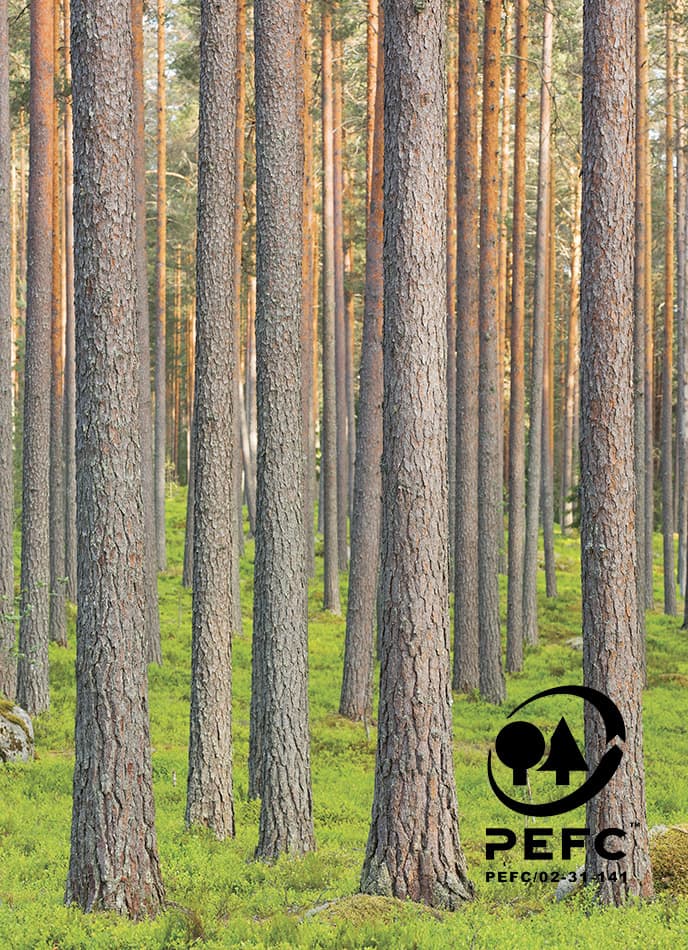
PEFC-certified raw materials from Finnish forests
When manufacturing our poles, we use glulam beams made of PEFC-certified Finnish pine. The glulam beams are in turn made of strength-graded pine lamella. Glulam beams are manufactured by gluing, stacking and compressing layers of pine lamella.
The lamellas used in our glulam beams are arranged so that most of the heartwood is facing outwards on the beam’s surface. This structure minimizes cracking and expansion/contraction in response to changes in humidity.
Glulam – a strong natural material
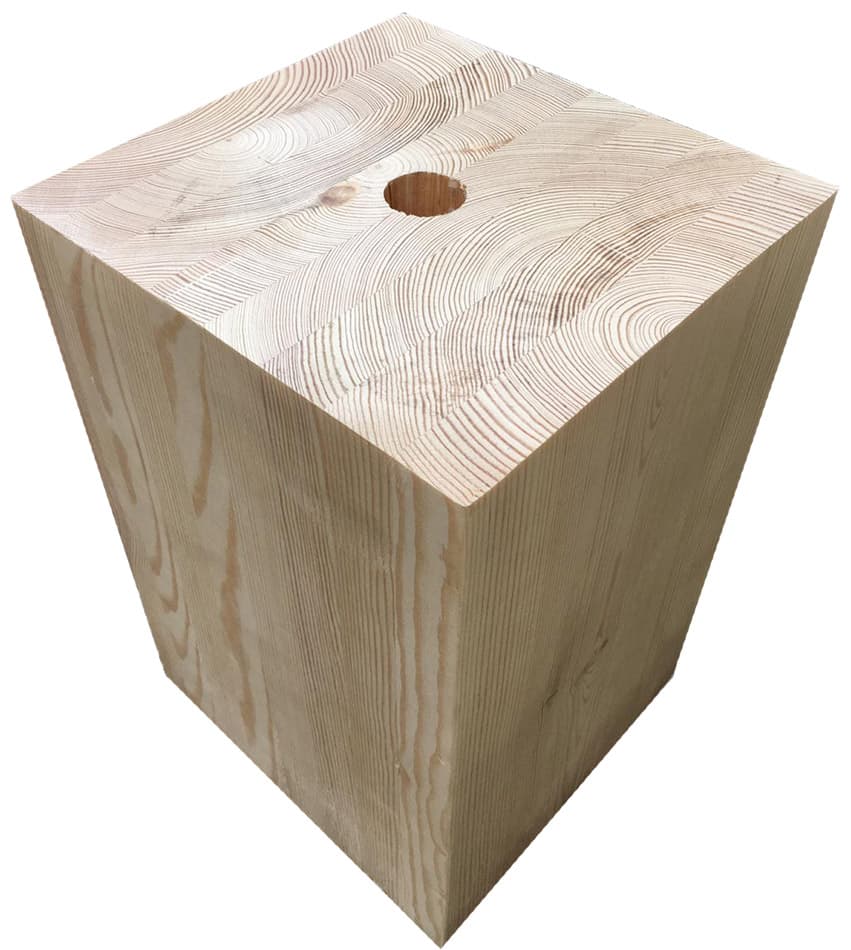
Relative to its weight, glued laminated timber is one of the strongest building materials available. Glulam is a natural material that is manufactured using a controlled and certified industrial process.
The glulam manufacturing process is supervised by internal quality assurance to ensure that products meet the quality requirements specified in the EN 14080 standard.
The strength and durability of the products is tested using a random sample as specified in the standard, and the manufacture of glulam is continually monitored by the supervisory authority. The key properties of glulam are its good strength, rigidity and durability.
We use glulam of strength classes GL28 and GL30 in the manufacture of our wooden poles. EN 1194-certified laminated Gl28h timber is made from lamellas of the same strength class. The letter h signifies that it is homogeneous. This means that the material retains its strength even after turning.
The dark heartwood is resistant to both rot and destructive insects
Pine heartwood is dark brown and clearly differs from the lighter sapwood. The pores between heartwood cells are usually clogged, which means that gases and liquids cannot easily penetrate the heartwood. The natural properties of heartwood are largely explained by its high extractive content, which increases the wood’s resistance to rot and destructive insects.
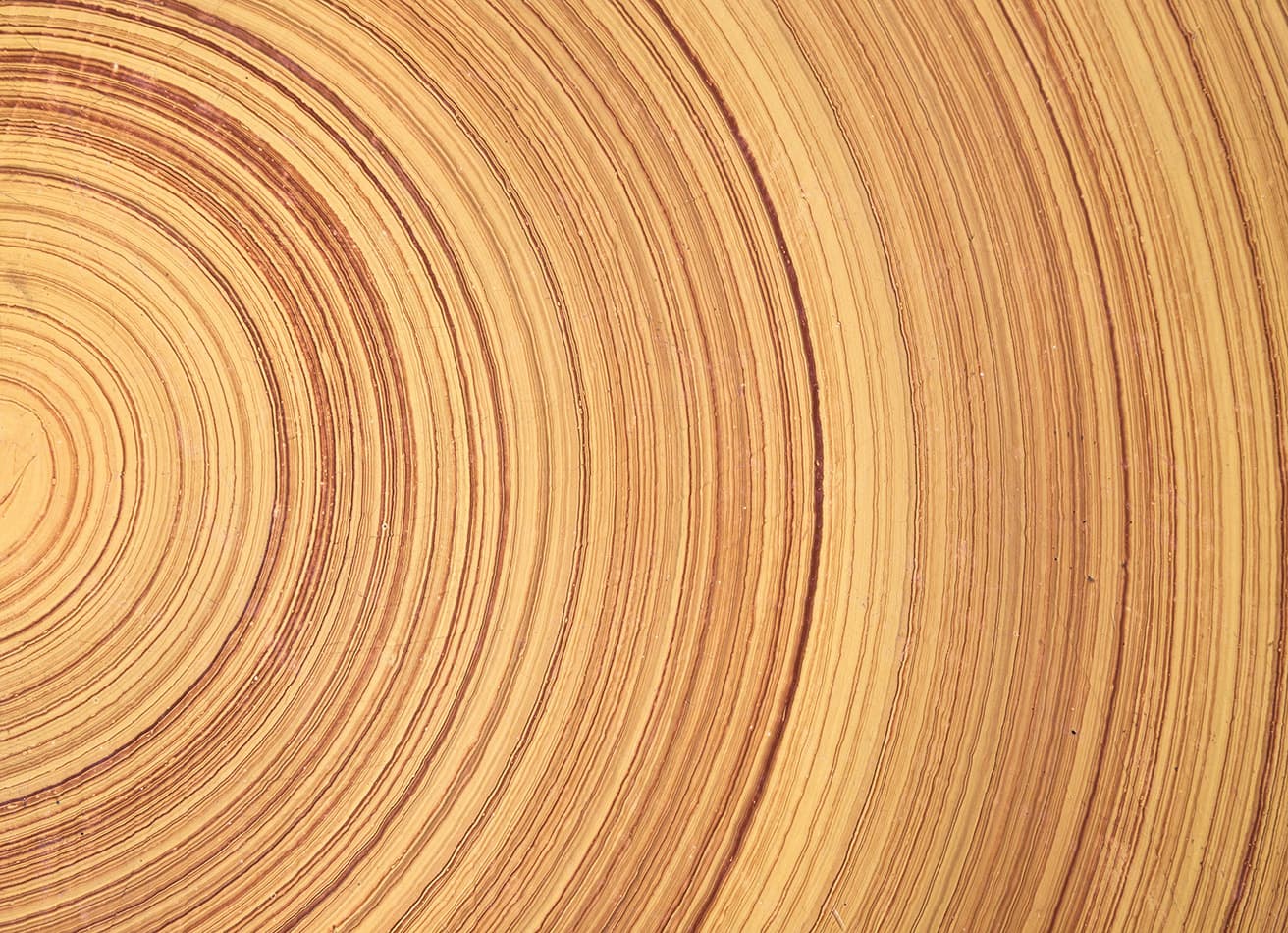
A quarter of pine is hard summer wood
Pine wood is also characterized by the annual rings formed by light spring wood and darker summer wood. The lighter spring wood is notably sparser than the darker summer wood. On average, 25% of pine is summer wood. Finnish coniferous trees have an excellent rate of growth, about 1–1.5 mm. This means that the relative amount of summer wood is at its highest, which also translates to maximum strength.
Strength properties
The strength properties of wood are significantly influenced by the grain direction, that is, whether a piece of wood is loaded with or against the grain. The tensile strength of wood is usually 10 to 20 times higher when going with the grain rather than perpendicular to it. The tensile strength is also significantly affected by the density of the wood: the tensile strength of spring wood is only one-sixth of summer wood.
A glulam seam does not fail
Only adhesives that are proven to have high strength and durability under long-term loads are used in the manufacture of glulam. The requirements for their adhesive properties are specified in the EN 14080 standard. Any durability problems that may occur in glulam are ultimately caused by the timber itself, not the glued seam. The glued seam will not be the first to fail.
Finger joints are used in pole structures that exceed standard dimensions. Finger joints are some of the most durable parts of a wooden light pole.
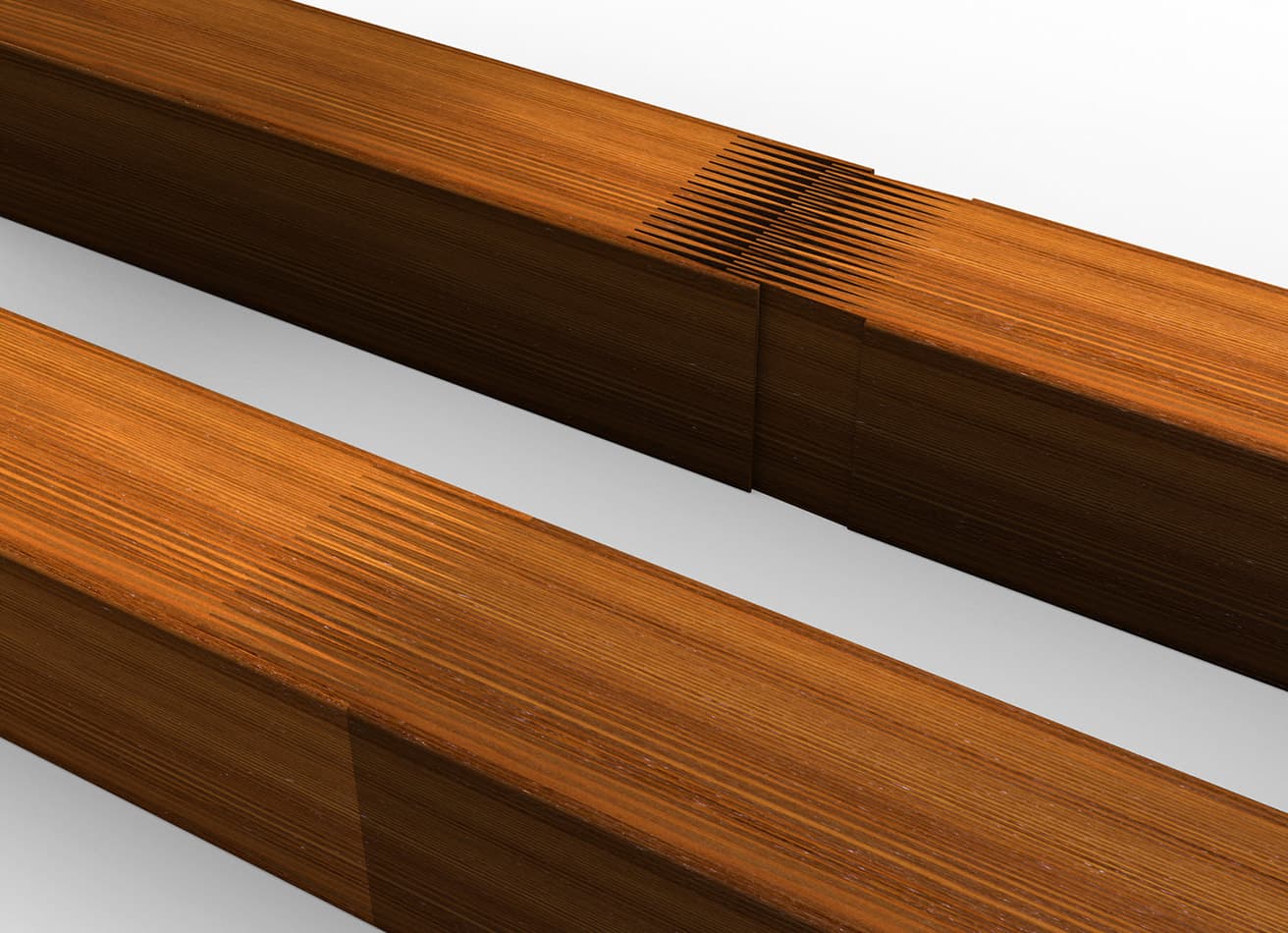
Glulam vs sawn timber
On average, the structure of glulam is both stronger and more rigid than a piece of sawn timber of the same size. This is due to the lamination effect: glulam consists of several layers of sawn timber lamella, so it is unlikely that every lamella would have its weakest cross section placed at the same point.
The wood used in each lamella is also strength-graded, which increases its homogeneity. As a result, the glulam structure has not only above-average strength but also lower variation in its strength properties compared to similar pieces made of sawn timber.
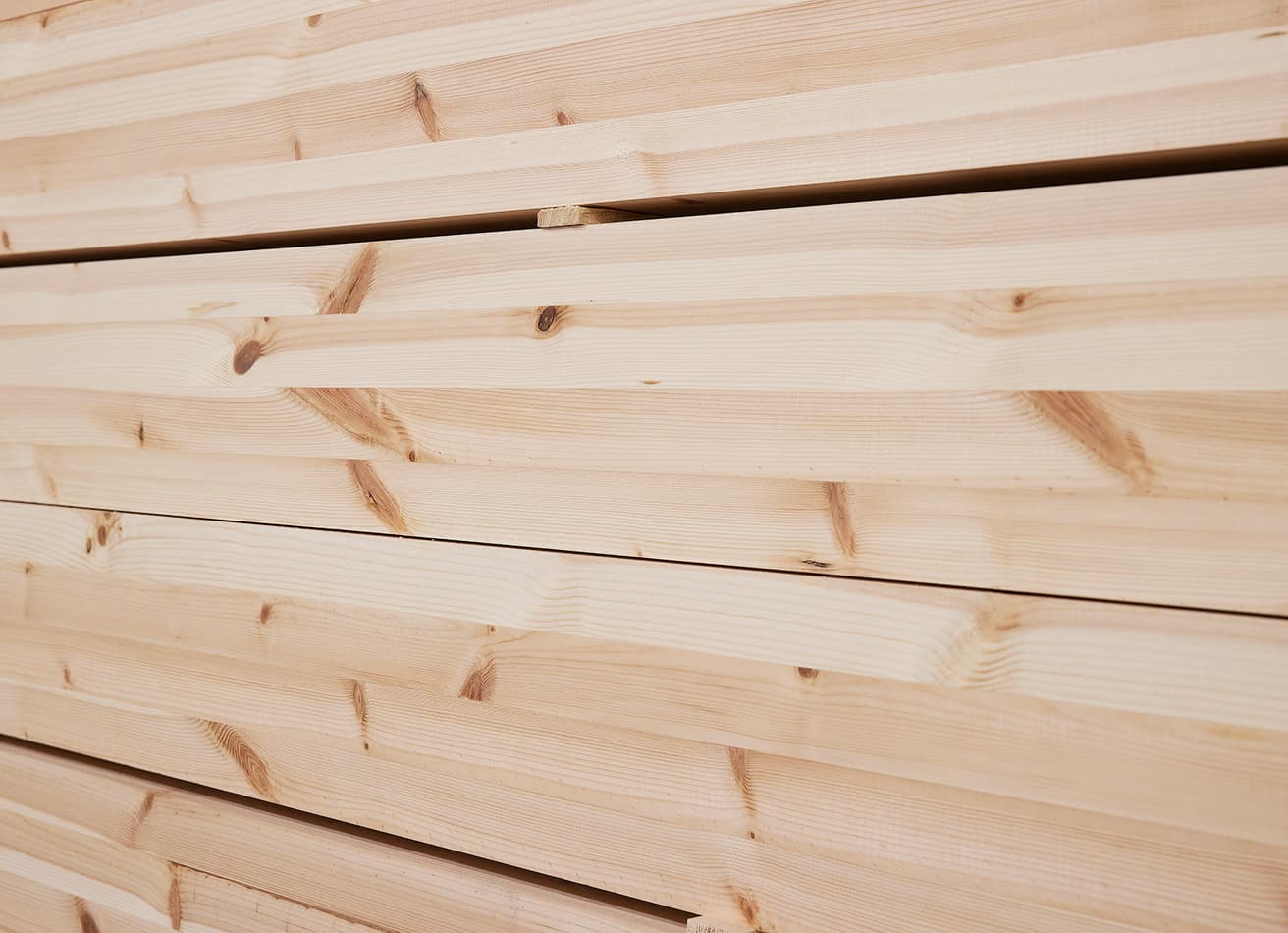
Wood has the same moisture content as its surroundings
Glulam has a moisture content of about 15% when it arrives at our factory. Its moisture content starts to change in order to achieve equilibrium with the relative moisture content of the surrounding air, and this continues with seasonal variations in humidity. The moisture content of wood normally varies from 4–5% between the seasons.
Gluing “calms” timber
Just like other wooden materials, glulam swells as its moisture content increases and contracts as its moisture content decreases. However, gluing significantly reduces the changes that occur in the wood in response to variations in humidity. Glulam has less of a tendency to bend and warp than regular sawn timber. This is due to the even distribution of the moisture content within the lamellas and the way the lamellas have been positioned.
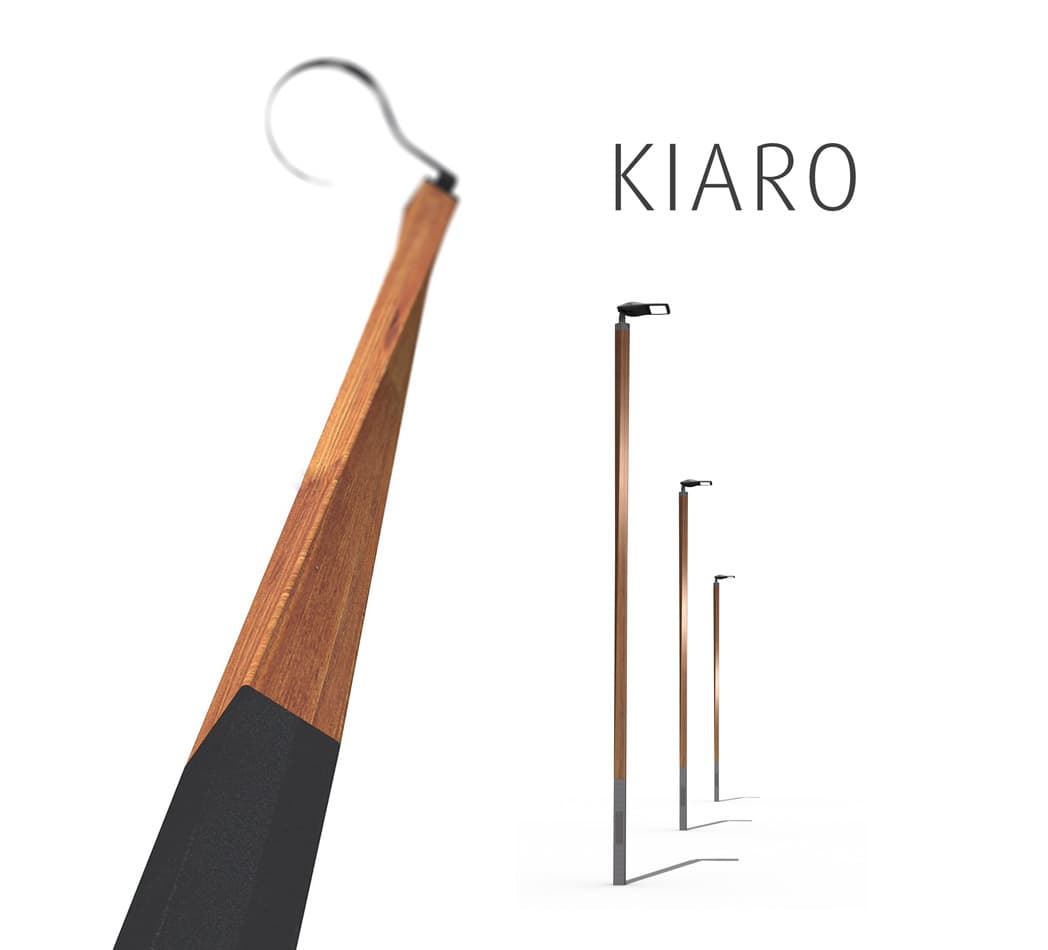
Glulam makes stable light poles that will not warp – although we can always bend the glulam beams into corkscrews if you so desire. Tehomet’s Kiaro wooden pole is a good example of this. This is definitely a pole that turns heads!